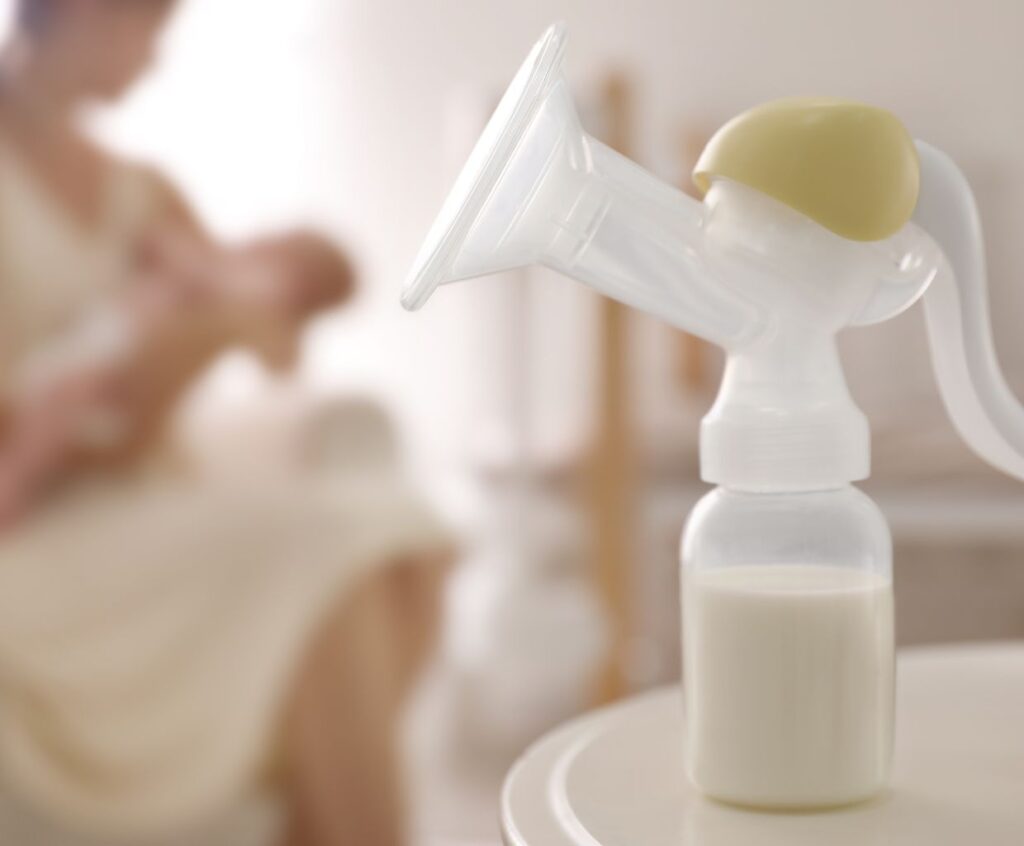How Much Breastmilk Should I Send To Daycare?
Hey there, new moms! If you’re heading back to work or need to leave your little one in daycare, one of the main concerns that might bother you is how much breastmilk to send with your baby. It’s understandable since you want to ensure your baby is well-nourished throughout the day.
Let’s dive into this topic and find out some helpful guidelines!

Factors to Consider
Several factors play a role in determining the right amount of breastmilk to send to daycare:
-
- Age: The age of your baby is an essential factor to consider. Younger babies consume smaller amounts of milk, while older babies may require more.
-
- Feeding Schedule: Consider how often your little one typically feeds throughout the day and try to replicate that schedule at daycare.
-
- Length of Time in Daycare: If your baby will be spending only a few hours in daycare, you may need to send less milk than if they will be there for an entire workday.
-
- Baby’s Appetite: Each baby is unique and has different appetite levels. Some babies may require more significant amounts of breastmilk to feel satisfied, while others may be content with smaller quantities.
-
- Supplementary Foods: If your baby has started eating solid foods, you may need to adjust the amount of breastmilk you send accordingly.
General Guidelines
While the exact amount of breastmilk required may vary, here are some general guidelines to help you get started:
For Infants:
-
- Aim to send around 1-1.5 ounces of breast milk per hour for babies younger than six months.
-
- So, if your baby will be at daycare for 8 hours, you should send approximately 8-12 ounces of breast milk.
-
- Consider adding an extra bottle in case your baby needs more milk than anticipated.
For Older Babies:
-
- Babies older than six months might need around 1.5-2.5 ounces of breastmilk per hour.
-
- Again, adjust the total amount based on your baby’s time in daycare.
-
- As per your pediatrician’s advice, introduce water or other liquids alongside breast milk.
Communication is Key
Remember, it’s crucial to maintain open communication with your daycare provider. Discuss your baby’s feeding schedule, preferences, and any changes in appetite. They can give you valuable insights and ensure your baby is well cared for.
So, new moms, don’t fret about sending your baby to daycare! By considering the factors mentioned above, following the general guidelines, and staying in touch with your daycare provider, you can send the perfect amount of breastmilk and ensure your little one stays happy and nourished throughout the day!
What factors should be considered when determining the amount of breastmilk to send to daycare?
There are several factors to consider when determining the amount of breastmilk to send to daycare:
1. Baby age: Newborns consume smaller amounts of breastmilk than older infants. As the baby grows, their milk intake increases.
2. Feeding frequency: Consider how often your baby is fed during daycare hours. You can calculate the total milk needed for each feeding if they are on a regular feeding schedule.
3. Baby’s appetite: Some babies have a more enormous appetite than others. Consider your baby’s needs and adjust the amount of milk accordingly.
4. Pumping output: Evaluate how much milk you can pump during each session. This will give you an idea of how much milk you can provide to daycare.
5. Storage guidelines: Check the storage guidelines provided by your daycare facility. They may have specific requirements for how much milk can be stored and how long.
6. Transition period: If your baby is transitioning to solids or introducing other forms of nutrition, you may need to adjust the amount of breastmilk sent to daycare accordingly.
It is always a good idea to communicate with your daycare provider to ensure they understand your baby’s feeding needs and to make any necessary adjustments as your baby grows.
Are there any guidelines or recommendations for how much breastmilk should be sent to daycare?
Yes, there are guidelines and recommendations for how much breastmilk should be sent to daycare. The American Academy of Pediatrics (AAP) suggests that babies typically consume 25-30 ounces of breastmilk in 24 hours, or about 1-1.25 ounces per hour, when separated from their mothers.
However, every baby is different, and individual needs may vary. It is recommended to consult with your pediatrician or a lactation consultant to determine the appropriate amount of breast milk to send to daycare for your specific baby.
How can a breastfeeding mother ensure that her baby receives enough breastmilk at daycare?
Ensuring that a breastfeeding mother’s baby receives enough breast milk while at daycare can be achieved through the following measures:
1. Establish a breastfeeding routine: Establish a consistent breastfeeding routine at home before starting daycare. This will help maintain supply and ensure the baby is accustomed to breastfeeding.
2. Pump and store milk: The mother should pump and store milk beforehand to provide breast milk while at daycare. Invest in a high-quality breast pump and store the milk in sterilized bottles or breast milk storage bags.
3. Communicate with daycare staff: Inform the daycare staff about the importance of breastfeeding and the baby’s feeding schedule. Discuss specific instructions, such as the baby’s preferred feeding position or pace.
4. Train the baby to take a bottle: Start introducing the baby to the bottle at least a few weeks before daycare begins. This will help them become comfortable with bottle feeding and make the transition smoother.
5. Practice paced bottle feeding: Educate the daycare staff about paced bottle feeding. This technique mimics breastfeeding and helps prevent overfeeding. The caregiver can hold the bottle upright and pause for burping breaks, similar to breastfeeding.
6. Label and organize breast milk: Clearly label each container of pumped milk with the baby’s name and the date it was expressed. Arrange the milk chronologically, ensuring the oldest milk is used first.
7. Provide enough milk for the day: Calculate the amount of milk the baby typically consumes during the time spent at daycare. Aim to provide about 1-1.5 ounces of milk for every hour of separation. For example, if the baby is away for 8 hours, pack 8-12 ounces of milk.
8. Offer breastfeeding when together: Breastfeed the baby as soon as they are reunited after daycare. This will help maintain the mother’s milk supply and provide comfort and bonding time.
9. Monitor the baby’s weight gain: Regularly monitor their weight gain to ensure they receive enough milk. Consult a pediatrician for concerns about the baby’s growth or milk intake.
10. Maintain a healthy diet and hydration: The mother should consume a nutritious diet and drink plenty of fluids to support milk production. A healthy lifestyle will positively affect the quantity and quality of breast milk.
Remember, every baby is different, and it may take time for the mother and baby to adjust to breastfeeding and daycare. Open communication with the daycare staff and the baby’s pediatrician is essential for monitoring the baby’s milk intake and overall well-being.

